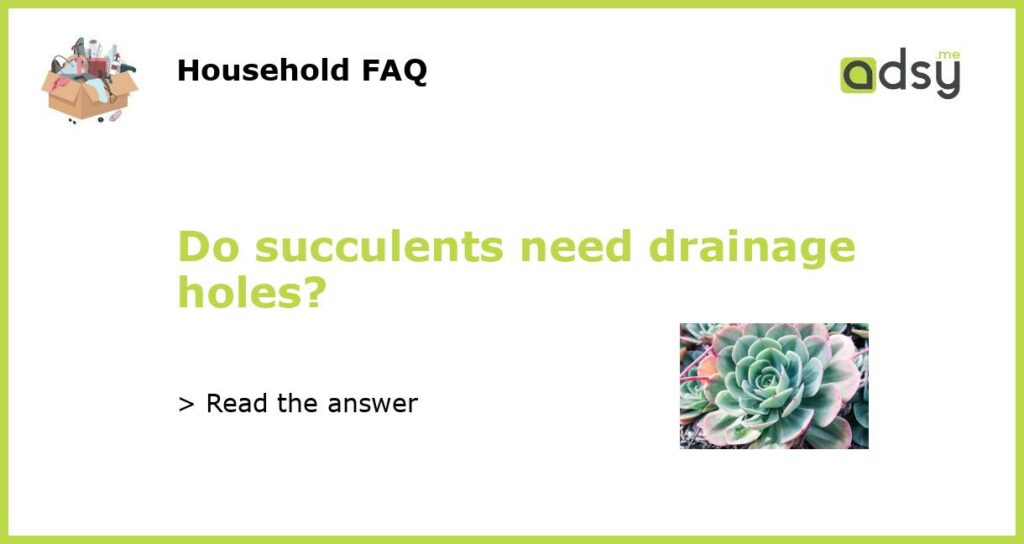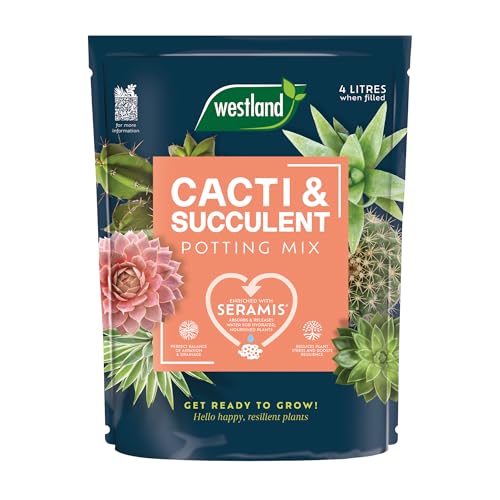Yes, succulents need drainage holes to thrive
If you are planning to grow succulents, it is important to ensure that their pots have drainage holes. Succulents are unique plants that have adapted to survive in arid conditions by storing water in their leaves, stems, and roots. However, these plants are susceptible to root rot if their roots sit in water for too long. Proper drainage is crucial for the health and well-being of succulents, and here’s why.
Preventing root rot
One of the main reasons why succulents need drainage holes is to prevent root rot. Root rot occurs when the roots of a plant are consistently exposed to excess moisture and lack oxygen. This can lead to the growth of bacteria and fungi that attack and decay the roots, eventually causing the plant to wither and die.
By having drainage holes in the pots, any excess water can easily escape, preventing water from pooling at the bottom and saturating the soil. This allows the soil to dry out between waterings, ensuring that the roots don’t remain constantly wet. Without drainage holes, the water has nowhere to go, increasing the risk of root rot.
Promoting airflow
In addition to preventing root rot, drainage holes also promote airflow within the potting soil. Good airflow is essential for the health of succulents as it helps prevent the build-up of excess moisture around the roots.
When succulents are watered, moisture seeps through the potting soil and collects in the bottom of the pot. Without drainage holes, this moisture becomes trapped, creating a damp environment that inhibits the flow of air. The lack of airflow can cause fungal and bacterial growth, which can harm the succulent’s roots and overall health.
Avoiding overwatering
Succulents are drought-tolerant plants that have adapted to survive in dry conditions. Overwatering is one of the most common mistakes made by succulent owners, as these plants prefer periods of dryness between waterings.
Having drainage holes in the pots helps prevent overwatering by allowing excess water to escape. When you water a succulent, the water should be able to flow freely through the drainage holes, rather than being trapped in the pot. This allows for proper water absorption by the roots while preventing water from pooling and causing root rot.
Choosing the right pot and soil
When growing succulents, it is important to choose the right pot and soil to ensure proper drainage. Ideally, pots should have drainage holes at the bottom to allow excess water to escape. If you have a pot that lacks drainage holes, you can create them by using a drill or adding a layer of gravel or broken pottery at the bottom.
In addition to proper pot selection, it is crucial to use well-draining soil for your succulents. Regular potting soil is often too heavy and retains too much moisture for succulents. Instead, opt for a well-draining succulent mix or create your own by adding coarse sand or perlite to regular potting soil.
In summary, succulents absolutely need drainage holes to thrive. The presence of drainage holes promotes proper airflow, prevents root rot, and helps avoid overwatering. If you want your succulents to stay healthy and flourish, make sure to choose pots with drainage holes and use well-draining soil specifically formulated for succulents.






